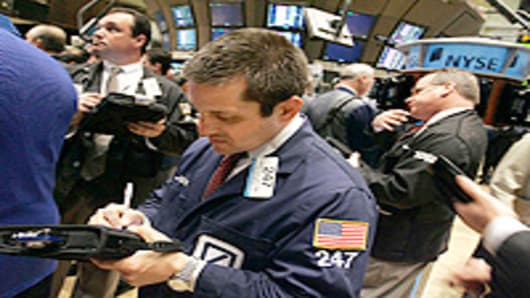Even if the economy performs as poorly as expected for the rest of the year, that may not mean bad times on Wall Street.
In fact, during times of slow economic growth since 1990, stocks have risen twice as often as they have fallen. The trend is important to remember amid a series of GDP downgrades from major analysts and worries that the economy even could fall into a double-dip or worse.
Many major analysts—Goldman Sachs and JPMorgan among them—have cut their GDP projections to below 2 percent for the third quarter and about 2 percent for the fourth. What that means for the stock market, though, may not be so obvious.
"Basically when you look at GDP numbers coming out they usually are not a very good predictor of the stock market," says Sam Stovall, chief investment strategist at Standard & Poor's. "It's sort of the other way around. The stock market tends to predict movements in the economy by six months."
The recent history of economic slowdowns is one of opportunity for stock-buying investors, sometimes in the extreme.
Take 1995, for instance. With GDP trudging along at a respective 1 and 0.9 percent pace in the first and second quarters, stocks were booming. The Standard & Poor's 500
gained 9 percent in the first quarter, then kept the momentum going with an 8.8 percent rise in the following three months.




